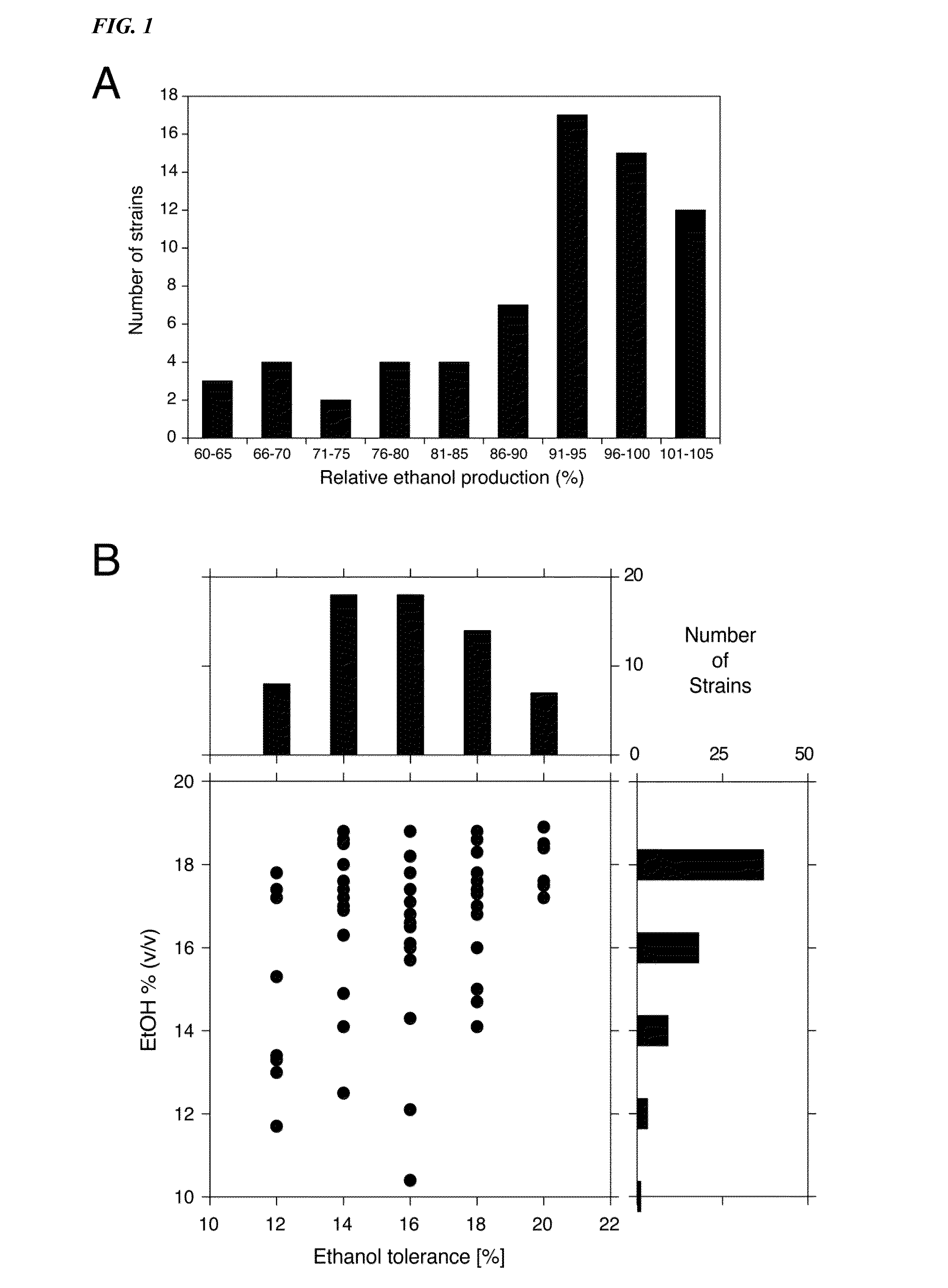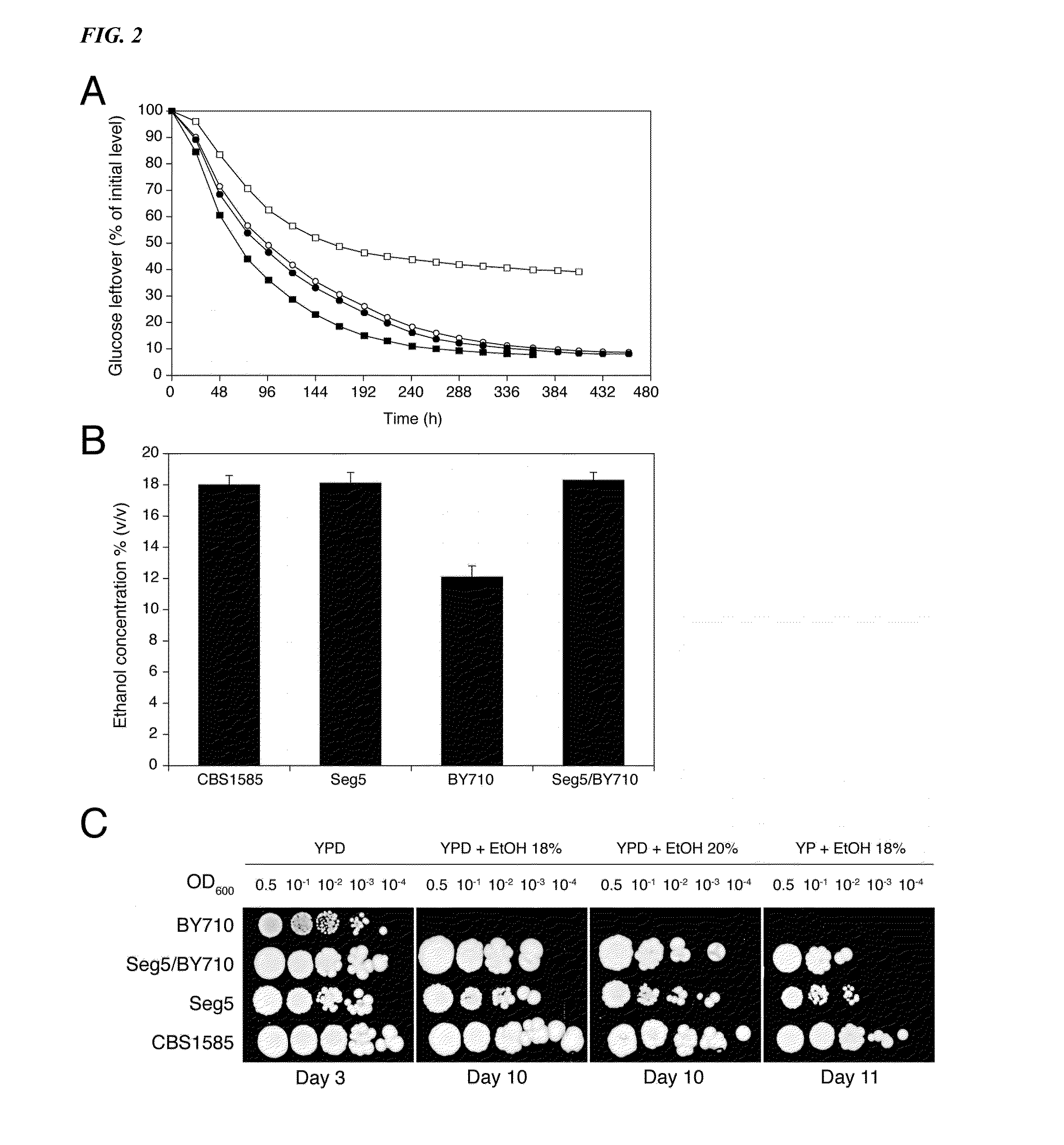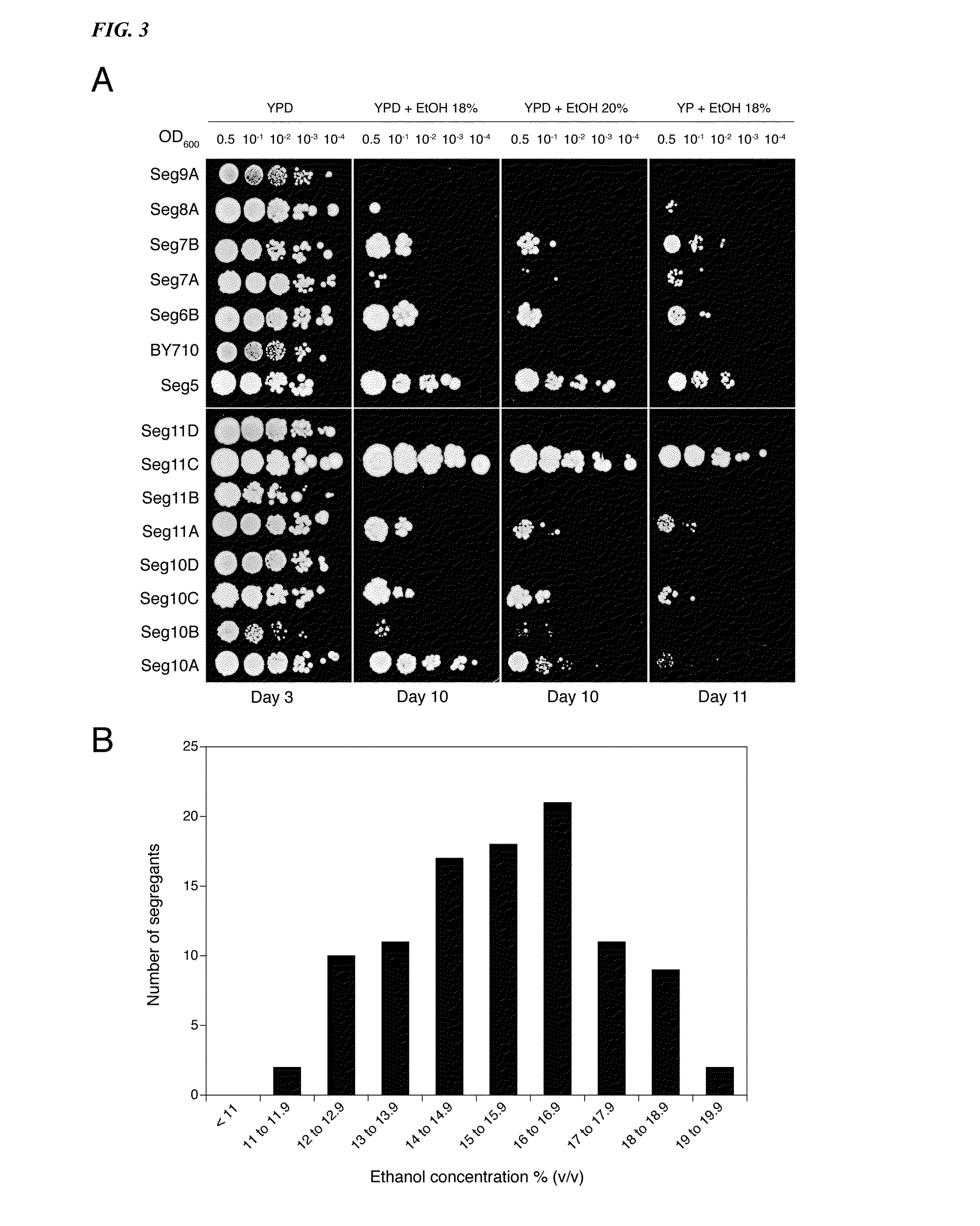Yeast alleles involved in maximal alcohol accumulation capacity and tolerance to high alcohol levels
a technology of alcohol accumulation capacity and yeast allele, applied in the field of yeast allele of kin3, can solve the problems of unwanted ethanol concentration and decrease in ethanol accumulation, and achieve the effects of modulating alcohol tolerance and/or accumulation, reducing alcohol accumulation, and increasing alcohol accumulation
- Summary
- Abstract
- Description
- Claims
- Application Information
AI Technical Summary
Benefits of technology
Problems solved by technology
Method used
Image
Examples
example 1
Strain Selection for Maximal Ethanol Accumulation Capacity
[0094]We have evaluated 68 different yeast strains in small-scale fermentations for maximal ethanol accumulation capacity under very high gravity (VHG) conditions (Puligundia et al., 2011), using 33% (w / v) glucose. The robust wine strain V1116 was used as reference in each series of fermentation experiments. FIG. 1A shows the number of strains able to accumulate a certain maximal ethanol level expressed as percentage of the ethanol level accumulated by V 1116 in the same experiment, which was 18.4±0.4% (v / v). There was no correlation between the final glycerol and ethanol levels produced but there was an inverse correlation between the final glycerol level and the ethanol yield. Table 2 shows the fermentation results for a number of representative strains ranked, according to the maximal ethanol level produced in comparison with the reference V1116.
TABLE 2Fermentation results for representative strains from the screen of 68ye...
example 2
Isolation of a Superior Segregant of CBS1585
[0099]The diploid sake strain CBS1585 was sporulated and stable mating type a and α segregants were obtained indicating heterothallism of the parent strain. Ten segregants were phenotyped in small-scale VHG semi-static fermentations. A segregant, Seg5 (MATa), was identified, which showed the same fermentation profile (FIG. 2A) and maximal ethanol accumulation capacity as its parent strain, CBS1585 (FIG. 2B). The laboratory strain BY710 (derived from BY4742; same genotype: Matα his3Δ1 leu2Δ0 ura3Δ0 lys2Δ0) showed a lower fermentation rate and also a much lower maximal ethanol accumulation capacity, which was only around 12% (v / v) (FIGS. 2A and 2B). The a mating type of the Seg5 strain was stable and FACS analysis confirmed that its DNA content was half that of its diploid parent CBS1585 (data not shown). We have crossed Seg5 with BY710 to obtain the diploid Seg5 / BY710, which showed a similar high fermentation rate (FIG. 2A) and high ethanol...
example 3
Comparison Between Ethanol Tolerance of Cell Proliferation on Solid Nutrient Plates and Maximal Ethanol Accumulation Capacity in Fermentation
[0100]We have investigated whether ethanol tolerance as determined by the classical assays of cell proliferation on solid nutrient plates containing different levels of ethanol, correlates with maximal ethanol accumulation capacity in fermenting cells in the absence of cell proliferation. For that purpose, Seg5 was crossed with BY710, the Seg5 / BY710 diploid sporulated and the segregants were first plated on solid media containing glucose and / or ethanol (18% to 20% v / v). FIG. 3A shows a representative result. The haploid parent Seg5 showed high tolerance of cell proliferation to ethanol whereas the laboratory strain BY710 was much more ethanol sensitive. Among the segregants we could observe some with very high ethanol tolerance (e.g., Seg 11C), some with intermediate tolerance (e.g., Seg 10A) and others that were as ethanol sensitive as the lab...
PUM
| Property | Measurement | Unit |
|---|---|---|
| v/v | aaaaa | aaaaa |
| v/v | aaaaa | aaaaa |
| flow rate | aaaaa | aaaaa |
Abstract
Description
Claims
Application Information
 Login to View More
Login to View More - R&D Engineer
- R&D Manager
- IP Professional
- Industry Leading Data Capabilities
- Powerful AI technology
- Patent DNA Extraction
Browse by: Latest US Patents, China's latest patents, Technical Efficacy Thesaurus, Application Domain, Technology Topic, Popular Technical Reports.
© 2024 PatSnap. All rights reserved.Legal|Privacy policy|Modern Slavery Act Transparency Statement|Sitemap|About US| Contact US: help@patsnap.com










